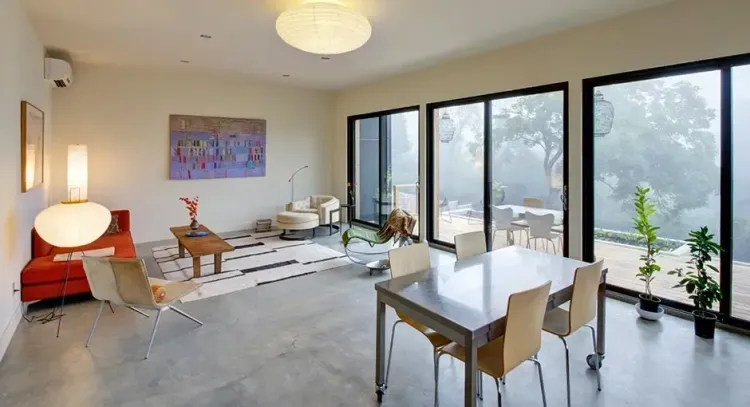Imagine a home so efficient that its very design not only saves energy, but helps create it. Imagine a home in which the temperature is comfortable and consistent year-round. And now imagine cooling and heating bills that are less than $20 a month. This is a vision that more homeowners are realizing through passive houses.
How do ductless heating and air conditioning systems fit into these innovative homes?
Passive Houses: The Standard For Efficiency
“Passive” is really a misnomer! These houses actively cut energy use with groundbreaking design and architectural features. To meet the rigorous “Passivhaus” Standard (developed in Germany in 1988), houses must reduce overall energy use by 60-70 percent and reduce heat usage by 90 percent over traditional homes.
There are over 30,000 passive homes in Europe and they are slowly becoming more popular in the United States. Catherine O’Neill of Sonoma, California, for instance, enjoys the state's first Certified Passive House™ and the country’s first Certified Passive House™ retrofit. She pays just $15-$20 a month on her heating and cooling bills, but doesn’t sacrifice comfort. Her home is kept at her ideal temperature in all seasons.
Thick insulation, triple-glazed windows and doors and passive solar energy help these efficient houses meet these requirements. Homeowners like O’Neill, though, turn to ductless heating and air conditioning systems to maintain a consistent and comfortable home year-round. Benefits include:
- Energy Efficiency: O’Neill, for instance, uses 80 percent less energy than owners of comparably sized homes in her area. Ductless systems use only the energy they need to cool or heat a space. Sophisticated models use sensors to continually respond to changes in temperature, rather than wasting energy by starting and stopping.
- Great Coefficient of Performance: Advanced ductless systems have a Coefficient of Performance (COP) between 250 and 300 percent. COP is the ratio of cooling or heating provided to the energy consumed. This means that builders turn to ductless heat pump technology to achieve these high energy efficiency requirements.
- Quiet Operation: Passive homes are virtually airtight. Thick insulation not only keeps out cold and heat, it keeps out noise. Sounds inside, though, can be magnified. Ductless heating and air conditioning systems operate as low as 19 dB(A), or just quieter than a whisper, to ensure ultimate comfort.
- Flexible: To take advantage of natural, renewable resources, such as solar or geothermal energy, passive houses often have innovative designs or complicated framing. Because they don’t require unwieldy ductwork, ductless systems are easy to integrate into the architecture of the house, whether new or existing.
- Nonintrusive Design: While the primary goal of passive buildings is to reach new heights of energy efficiency, owners are understandably proud of their state-of-the-art homes. Ductless systems feature small indoor and outdoor units, which do not detract from the aesthetics of the homes or their landscaping.
Ductless systems are ideal for passive homes. They are able to meet the stringent demands of these high-efficient buildings while ensuring their owners are comfortable year-round.
An increasing number of homeowners are following O’Neill’s lead and realizing how following Passive House standards can benefit them.









